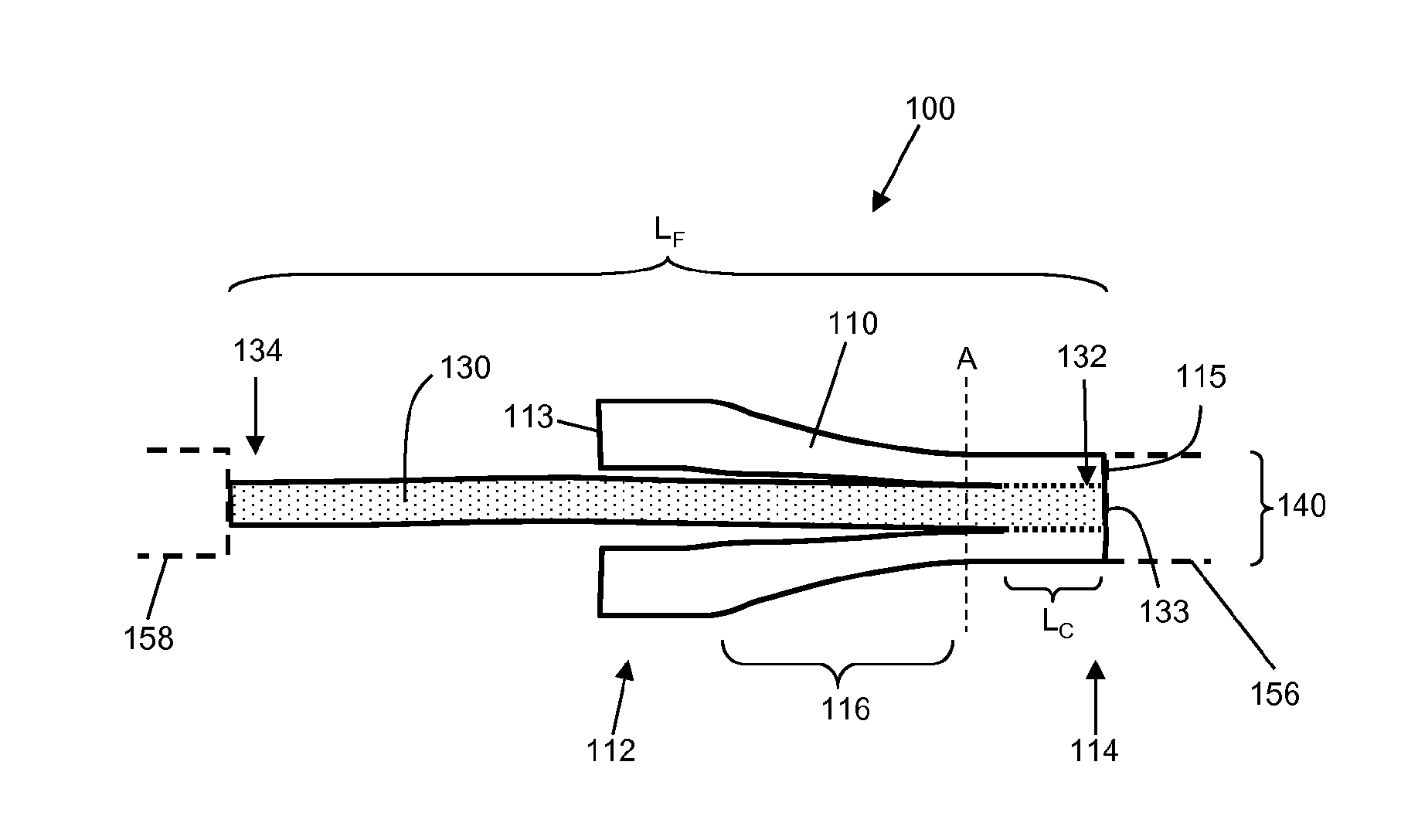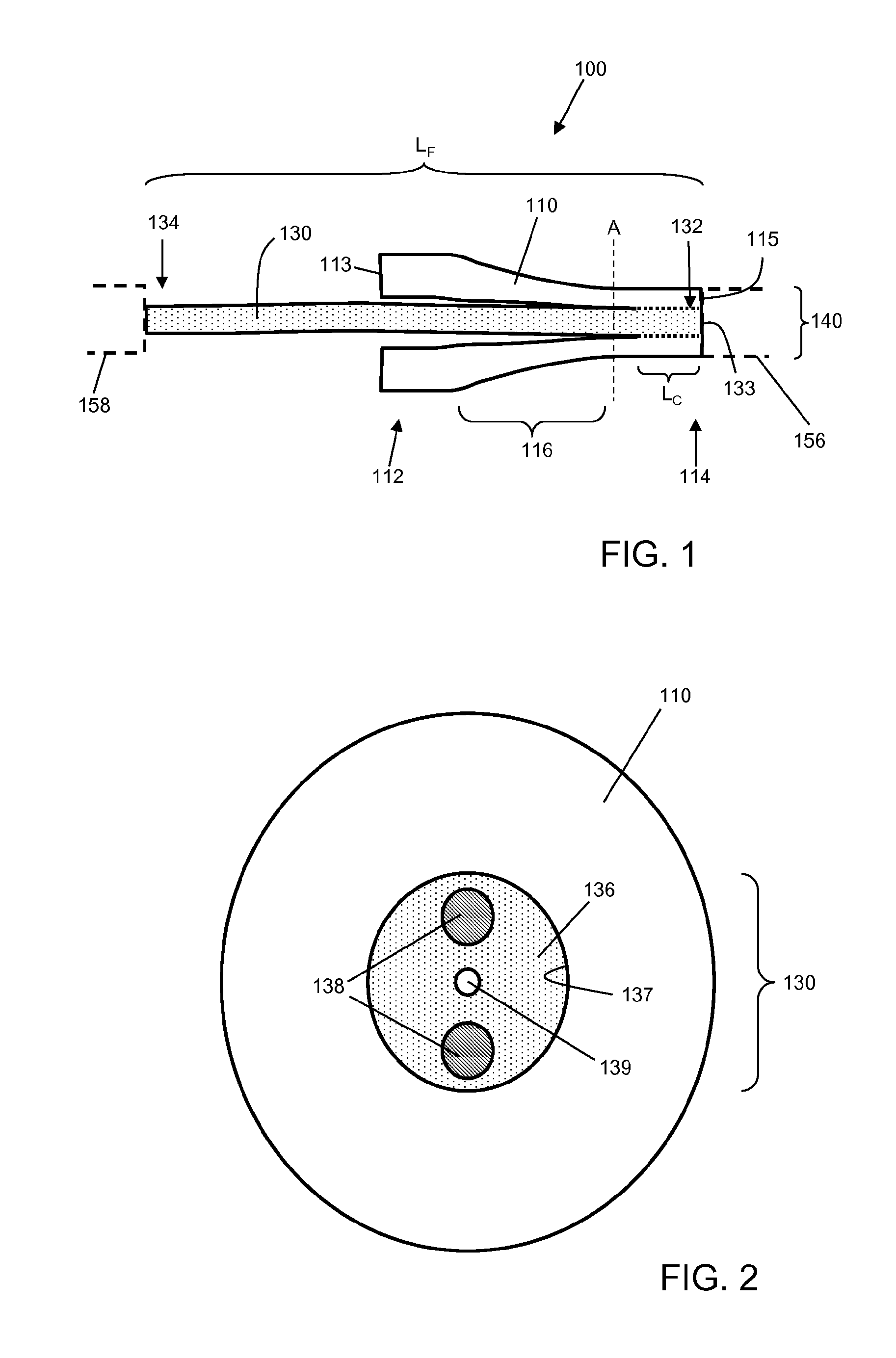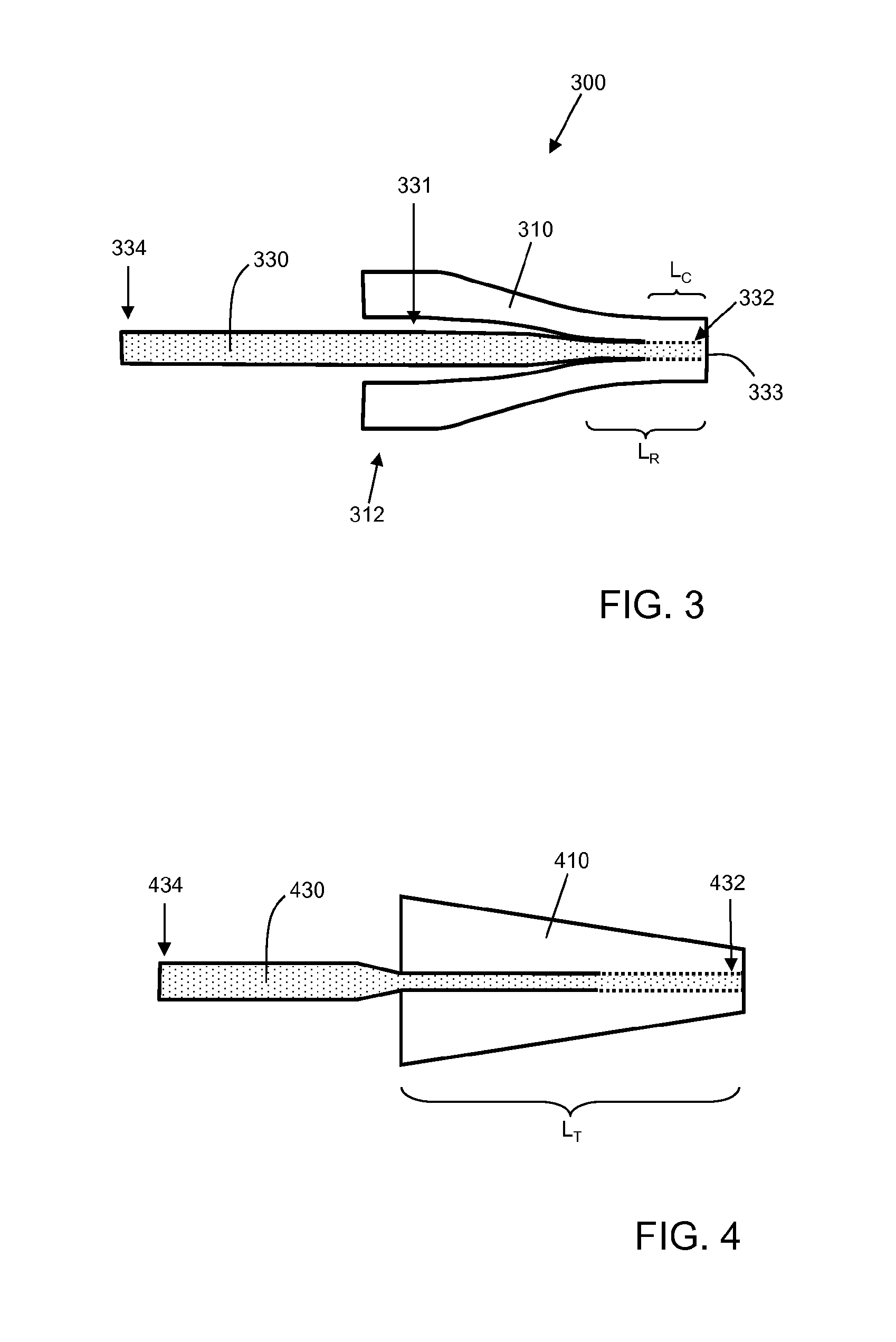Optical Couplers And Methods For Making Same
- Summary
- Abstract
- Description
- Claims
- Application Information
AI Technical Summary
Benefits of technology
Problems solved by technology
Method used
Image
Examples
example 1
[0090]A glass capillary was drawn with heat to provide a tube as described with respect to FIGS. 1 and 3. The birefringent optical fiber shown in FIG. 13 was etched with HF to just outside the birefringence-inducing elements over a section thereof about 50 mm in length, and disposed in the narrow end of the tube. The narrow end of the tube was heated to collapse around the etched fiber; and cleaved to form an end face. The cleaved end face is shown in FIG. 14.
[0091]The polarization extinction ratio (PER) for the device was measured using the experimental setup shown in FIG. 15. Polarized light at a wavelength of 1 μm with a polarization extinction ratio greater than 30 dB was launched into the input of the device. The input was oriented so that the axis of polarization of the light was aligned with the major axis of the polarization-maintaining input fiber. Two orthogonal states of output light were measured. FIG. 16 provides data for Measurement Point A, before the device. FIG. 17 ...
example 2
[0092]A coupler was made substantially as described above in Example 1. The cleaved endface of the fiber was spliced to 25 / 400 polarization maintaining fiber using a CO2 laser glass working station. The cleaved endface of the coupler, the cleaved endface of the PM fiber, and the fused device are shown in the pictures of FIG. 18. The PER of the overall device was measured substantially as described above with respect to FIG. 15, but measuring the output from the PM fiber. Results are shown in FIG. 19. The PER was measured to be about 18 dB The PER of the input signal was measured to be about 20 dB via a cutback method. Accordingly, the signal is transmitted through the device with very little loss of polarization integrity.
[0093]In the claims as well as in the specification above all transitional phrases such as “comprising”, “including”, “carrying”, “having”, “containing”, “involving” and the like are understood to be open-ended. Only the transitional phrases “consisting of” and “co...
PUM
 Login to View More
Login to View More Abstract
Description
Claims
Application Information
 Login to View More
Login to View More - R&D
- Intellectual Property
- Life Sciences
- Materials
- Tech Scout
- Unparalleled Data Quality
- Higher Quality Content
- 60% Fewer Hallucinations
Browse by: Latest US Patents, China's latest patents, Technical Efficacy Thesaurus, Application Domain, Technology Topic, Popular Technical Reports.
© 2025 PatSnap. All rights reserved.Legal|Privacy policy|Modern Slavery Act Transparency Statement|Sitemap|About US| Contact US: help@patsnap.com



